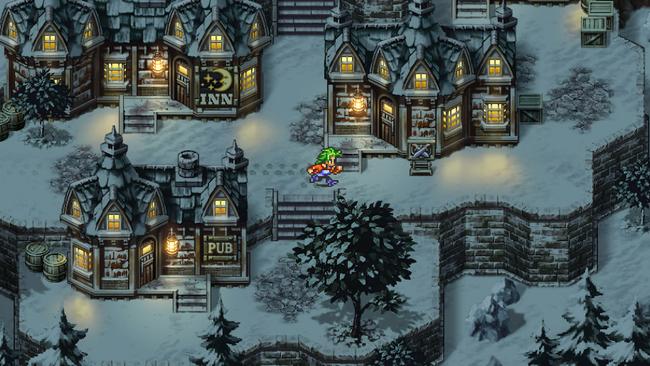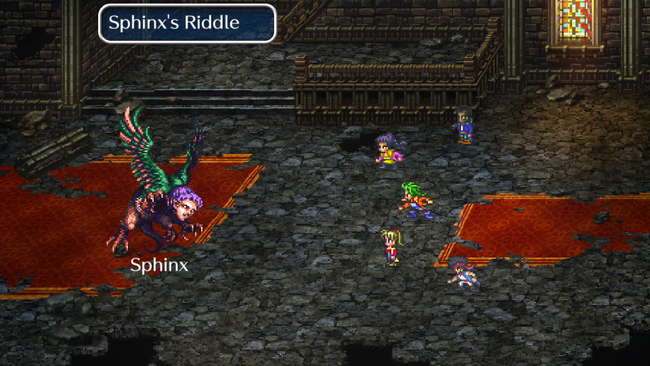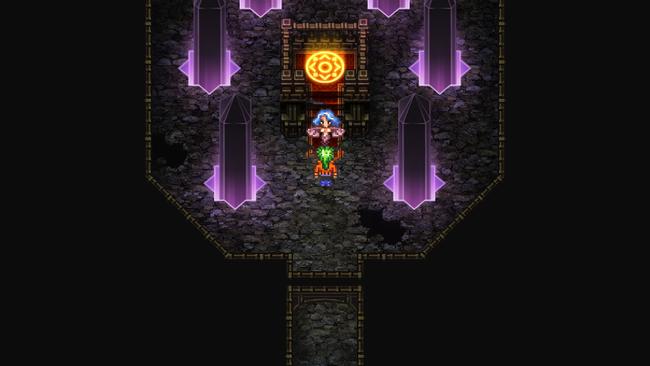
Romancing SaGa 3 Review
Romancing SaGa 3 is a classic JRPG that originally released on the Super Famicom back in 1995. Like its predecessor in Romancing SaGa 2, against the odds, the game has now been remastered and is making its first official release in the west. To begin describing the nature of this series is somewhat difficult, as SaGa games often utilize rather obtuse gameplay systems that break the conventions that other traditional RPGs tend to have.
The story of Romancing SaGa 3 starts with the presence of the Morastrum, a death eclipse that will wipe out all lifeforms every 300 years. In each Morastrum, there will be a lone survivor that will end up as the child of destiny that will either save the world or bring it to destruction.

After the story opening, you are given eight selectable protagonists, each with their own unique introduction. After the prologue chapter, you're thrown into the wild with no clear objectives, and you will need to figure out what to do in order to eventually trigger the ending boss fight. It's almost as though you are given a damaged painting, and then you are asked to restore it to its former glory without any form of reference. It can result in a creative masterpiece or something you might throw into the trash. The plotline itself is very minimalistic, and it would be best to look elsewhere if you want a game focused on the story.
It's the gameplay aspect of Romancing SaGa 3 that is most interesting & unique, as is often tradition with the franchise. The game, however, provides the player with next to zero tutorial on even the most basic things like how the battle system works or identifying what your current objective is. The battle system is reminiscent of old turn-based Final Fantasy games, except your abilities are learned pseudo-randomly with a system called Glimmer. This is sometimes called Sparking colloquially in the fandom, where you strike at enemies and somehow the character you're controlling manages to learn a new trick from it, giving you a new skill (this event being called a 'spark').
The odds of this occurring scales with your weapon efficiency and your character’s natural talent. However, the problem with the glimmer system is that there are zero tangible indicators on each character’s proficiency so everything is experimental. When characters master certain skills, they can transfer them to other party members. As for how a character grows, this is also hidden. Each character possesses a hidden table that influences their growth rate for each ability, but how a character grows is determined solely by which abilities they use. So if you are using a sword skill, you would have a chance of increasing your sword level. Essentially, characters are developed through exercised use of their abilities.

The battles in the game can also be extremely difficult, and a simple grind will not help you brute force through as proper knowledge of mechanical gameplay systems is essential to your success. Instead of learning how to play the game through tutorials, Romancing SaGa encourages experimentation, trial and error, and sometimes flat-out failure. You'll ultimately be figuring the ins and outs of combat by simply trying it out, facing some resistance, and likely struggling a bit if you are new to SaGa-style systems. A great addition to this entry over the original games is a New Game+ function, which is accessible at any time. It's a great tool for new players so that they can quickly start over with their abilities, skills, and certain items if they mess up their current run.
As for navigating through the game, you are practically given no objectives. Your time is spent collecting rumors by speaking to various NPCs in order to discover side quests that will eventually lead your overarching objective. Each side quest has multiple outcomes depending on how you choose to complete them.
Hidden away is a karma system that awards you a point based on how you choose to complete a quest. Depending on your karma, certain side quests may be locked in the future. The best addition to the game compared with the original counterpart is the Adventurer's Log, which helps you keep track of these side quests without completely being lost.

Presentation-wise, the game is visually similar to its SFC counterpart with changes to the port including backgrounds redrawn at a larger resolution, while the character sprites seem to be simply upscaled. This gives the game a visually pleasing look without ruining the original aesthetics, unlike some of the mobile ports of other flagship Square Enix titles. Furthermore, bosses are also well-animated, and overall, you won't be complaining about the redone classic graphics of this game - especially coming from someone who has played the original.
Along with the graphics, the soundtrack is also superb, with Kenji Ito’s composition ranging from intense battle themes to soothing themes, transitioning effortlessly to match the atmosphere of each environment. Needless to say, the soundtrack hasn't aged one bit.
Although Romancing SaGa 3 is a wonderful game, I hesitate to recommend playing this game without any prior knowledge of the series or knowing what to expect. The obtuse nature of the game is very different from many other traditional RPGs, and I advise interested new players to go into the game with an open mind. Veterans of the series, on the other hand, will know what they're getting into, which is essentially the definitive version of Romancing SaGa 3: a port that improves aspects of the game without ruining the appeal of the original. Hopefully, Square Enix can give some of their other retro titles the same treatment they gave for this game.